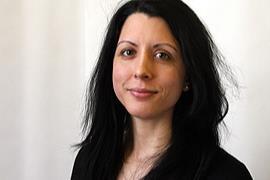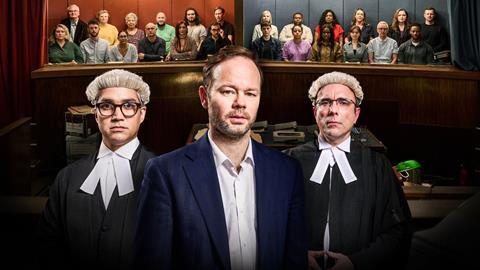Entering the hallowed sanctum of the jury room to lift the veil on secret deliberations is something that many lawyers have doubtless wished they could do – especially where clients are convicted.

Channel 4’s docudrama The Jury: Murder Trial, broadcast last week, was billed as a ‘landmark experiment’ that would deliver valuable insight into how juries make decisions. It failed. The four-part series was so flawed, with authenticity sacrificed on the altar of drama and ratings, that it was potentially damaging to the public’s respect for the justice system.
The series deployed the transcript of a real case, with actors playing the judge, barristers, defendant and witnesses. Channel 4 would not confirm identities, but a spokeswoman said that those involved in the real trial were told about the series in advance.
A quick Google search using obvious keywords throws up a 2013 case that appears to align with the one used. The defendant John, played by Sam Alexander, admitted to killing his new wife Helen (Kate Sheridan) with a hammer. But he denied murder, arguing that he was provoked and lost control.
The show’s MacGuffin was that Channel 4 assembled two separate juries, each unaware of the other, to decide whether the defendant was guilty of murder or manslaughter. It sought to explore whether the juries would reach the same verdict and, depending on the outcome, invited viewers to judge whether they could ‘trust our justice system’.
The defendant in the real trial was convicted of manslaughter. Unsurprisingly, in the show the juries returned different verdicts, implying that on the basis of a single trial the system cannot be trusted.
From the outset, multiple errors revealed that the programme-makers were unconcerned with authenticity. The prosecutor wandered US-style around the courtroom as he addressed the jurors; one witness gave evidence after sitting at the back of the court for the preceding part of the trial; and the wardrobe department donned the prosecutor – who had tied his bands around the collar of a normal shirt – in a peculiar US-style gown.
At least the judge, sporting a barrister’s wig, did not bang a gavel at the conclusion of the case.
More fundamentally, the programme presented random snippets of the case, with the defence preceding the prosecution – reversing the chronology in a real criminal trial.
There was no proper summing up from the judge, who provided no legal directions on what in law constituted the ‘qualifying trigger’ required to show a loss of control. Nor was a ‘route to verdict’ giving the juries a structured series of questions to help with their deliberations.
At each stage during the trial the jurors were filmed heatedly discussing the evidence they had just seen, in small groups or in individual pieces to camera, during which they also revealed elements of their own life stories. This made it more like Big Brother than a serious docudrama.
In reality, juries are told to discuss the case only when they are all together and not in groups, and to keep an open mind until they have heard all the evidence, speeches and legal directions.
Rather than random members of the public who sit on normal juries, the participants had presumably applied to go on the show and were selected with an eye to how they would come across on television. The 24 jurors were also aware that they were being filmed and were doubtless directed to play up to the cameras.
Supporters regard jury trials as a vital check on the power of the state. In 1956 Lord Devlin described them as ‘the lamp that shows that freedom lives’.
The Jury was a missed opportunity. It could have been much better without losing the tension that was replaced by manufactured-for-television drama. The errors and omissions may seem minor, but those who have never seen a real trial are left with a misleading idea of the process. That could deter complainants or witnesses from being involved, or put people off doing jury service.
Some ministers, battling to find courts, judges and criminal lawyers to reduce the backlog of more than 65,000 Crown court cases, would be glad to see the back of jury trials – they are more expensive and longer than the alternative (trials in front of a judge or magistrate). But anyone backing their abolition must consider what would replace them. A 2020 report from Labour’s David Lammy showed that jury trials were the one part of the criminal justice system that did not discriminate against those from ethnic minority backgrounds.
The programme plays into the hands of those who would seek to limit the right to trial by jury, at a time when some argue that it is already being undermined in the cases of climate change protesters who are prosecuted as a result of their actions.
Only last week, a judge threatened jurors with criminal charges if they sought to try climate change protesters charged with causing criminal damage to JP Morgan on the basis of their conscience rather than the evidence.
In other cases, judges have limited what protesters can tell juries about the motivation for their actions, with some defendants imprisoned for disobeying such orders.
Catherine Baksi is a freelance journalist and qualified barrister
































8 Readers' comments